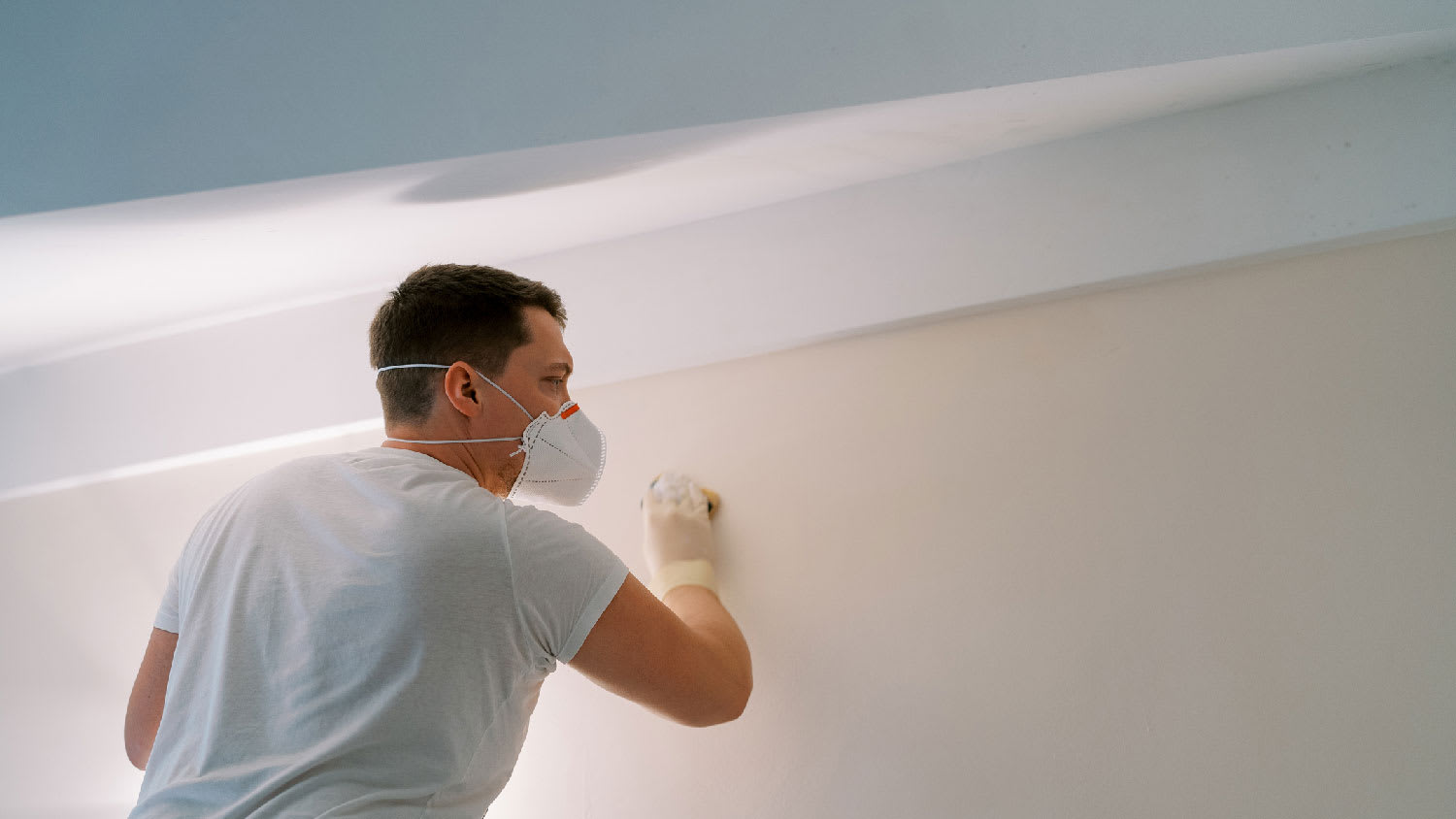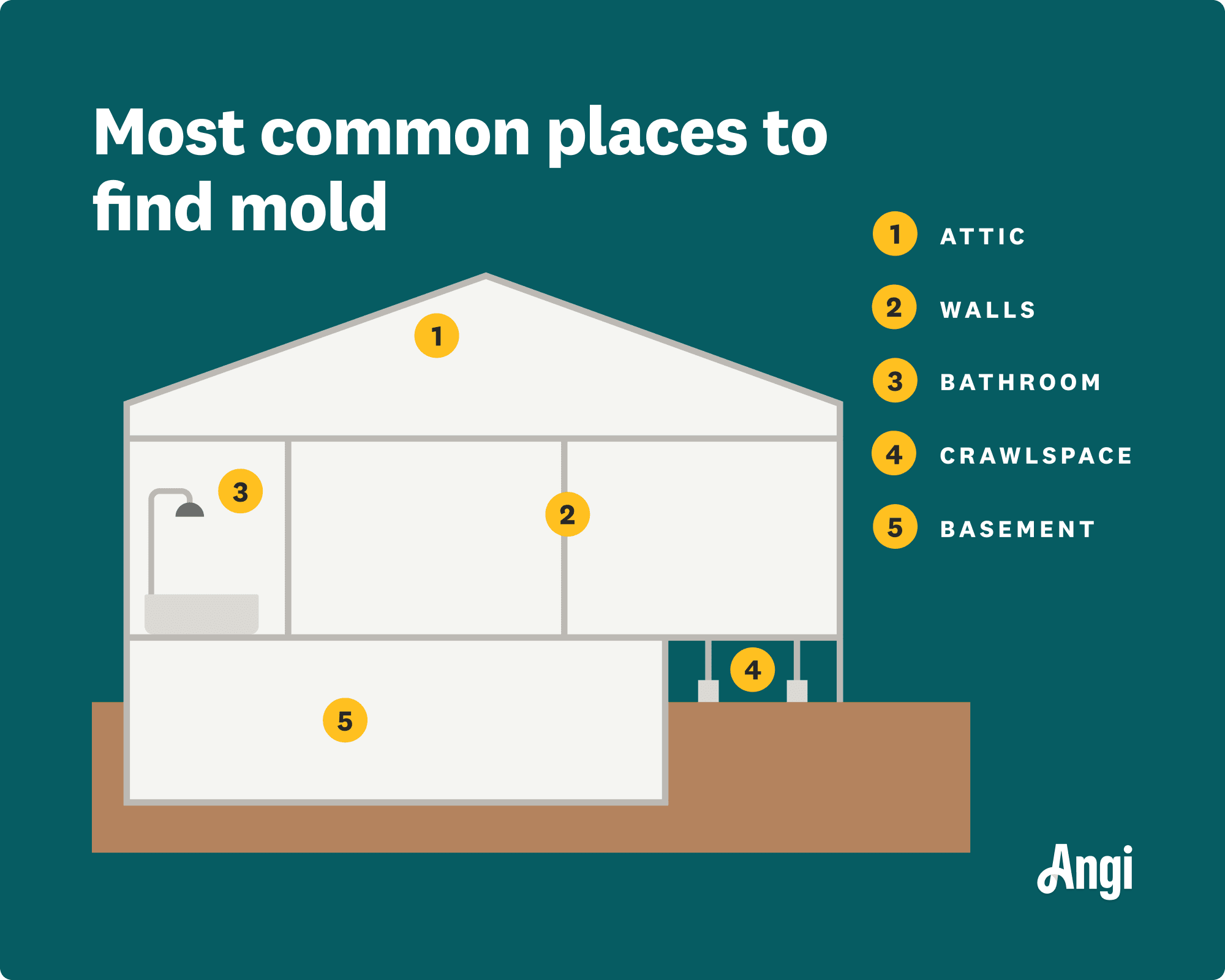
The cost of a mold inspection might seem high, but it’s one of the best investments you can make for your health and home. Read on to learn cost-saving tips.
Mold remediation costs in Denver, Colorado, cost $2,056 on average, but it can cost between $1,109 and $3,112, depending on location, type, and size of infestation.


The best route is to make sure your pro is certified in mold removal, even though Denver doesn’t require it.
Labor costs for mold removal depend on how much mold is present and how difficult it is to remove.
The Denver Department of Public Health & Environment offers recommendations for cleaning up household mold
Untreated mold in your home can lead to health risks, extensive damage to walls, HVAC systems, crawl spaces, and more. Mold remediation costs in Denver fall between $1,109 and $3,112, and homeowners pay an average of $2,056 to have this pesky issue removed. A mold remediation pro can evaluate mold in your home and give you a cost estimate as well as offer recommendations to prevent future issues.
Mold remediation costs in Denver, Colorado, depend on where the mold is located, how much there is, the type, and the extent of damage. While you may be able to DIY the mold removal, hiring a pro will ensure that the mold is entirely removed and that underlying issues, like structural damage, are resolved.

It costs more to remove mold from certain areas of your home than others. For instance, mold growth in hard-to-reach areas, like in your HVAC system or drywall, can require more time and materials to remove than mold in very accessible areas, driving up costs.
| Location | Average Remediation Cost |
|---|---|
| Attic | $1,000–$4,000 |
| Basement | $500–$3,500 |
| Crawl space | $500–$2,600 |
| Wall | $1,000–$20,000 |
| HVAC systems | $3,000–$10,000 |
| Bathroom | $500–$1,000 |
| Whole house | $10,000–$30,000 |
Most mold removal professionals charge $10 to $25 per square foot. So, if you're removing mold from a 100-square-foot area, you can expect to pay around $1,000 to $2,500. But factors like where the growth is and the mold type can affect how much it costs to remove it.
Mold inspection costs between $300 and $1,075. Mold testing is key to determining whether you have the presence of mold in your home, plus the extent of the infestation. You’ll need to hire a mold inspector to test surface samples in your home before moving forward with remediation.
Regardless of how it affects remediation costs, you need to know which type of mold you have in your home for your safety. That said, if a mold test reveals the presence of black mold, your mold remediation pro will likely charge more to remove it based on the additional cost of protective equipment.
| Type of Mold | Description |
|---|---|
| Alternaria | A common mold found outside in spring and summer, it primarily attacks plants. |
| Aspergillus | White fuzz that turns black over time, but it can also be brown, yellow, and green. It can cause respiratory illness and requires immediate remediation. |
| Aureobasidium | Grows on painted surfaces and behind wallpaper. It’s often pink and causes allergies. |
| Chaetomium | Extremely toxic and can cause brain infections and various cancers. A white fuzz that turns to blue or green. Requires immediate professional removal. |
| Cladosporium | Commonly found in basements and HVAC systems. It can cause mild allergy symptoms. |
| Fusarium | One of the most toxic molds; requires professional removal once discovered. Often caused by water leaks, it is commonly found in walls and floors. |
| Penicillium | Blue-green and grows in areas of elevated moisture where water damage has occurred. It can be very dangerous. |
| Serpula lacrymans | Causes severe damage to wood and spreads fast. Unfortunately, this mold is usually found after it has spread widely. |
| Stachybotrys chartarum (black mold) | Extremely dangerous, not to mention fast-spreading. Requires immediate removal by a professional. |
| Trichoderma | Grows rapidly in wood, plants, and soil. Commonly found in HVAC systems and not as widely discovered as others in this list. |
| Ulocladium | A dark-colored mold found near windows and in kitchens and basements. Looks like black mold, but it isn’t as toxic to humans. Nevertheless, it still requires removal. |
If left untreated, mold can damage your drywall, carpeting, and flooring. Replacing or repairing your walls or floors will add costs to the removal.
Here are some cost estimates for different types of mold damage repairs in Denver, Colorado:
| Repair Type | Average Cost |
|---|---|
| Drywall | $1,000–$2,900 |
| Carpet | $775–$2,600 |
| Flooring | $200–$550 |
Denver doesn’t have many specific regulations regarding mold remediation, but Denver Public Health & Environment offers a Household Mold Fact Sheet that gives recommendations for controlling and removing mold. You should still be aware of labor costs and regulatory requirements.
Labor will account for the bulk of the cost to remove mold. Supplies and materials for mold remediation aren’t expensive, and homeowners can DIY mold removal for between $50 and $300. Hiring a mold remediation pro in Denver, Colorado, however, will give you a better chance of addressing the mold issue and avoiding recurring issues.
Neither the city of Denver nor the state of Colorado has specific licensing or certification requirements for contractors who handle mold remediation. However, contractors do need to be licensed with Denver’s Community Planning and Development, and certification programs are typically completed to ensure they’re qualified to handle mold infestations. Check with your contractor to make sure they’re meeting all of Denver’s requirements.
Denver’s Residential Housing Regulations require that interior walls, ceilings, and floors be free of mold associated with dampness, so if you see signs of mold, it’s crucial to have it addressed quickly.
For small mold issues, you’ll likely only need to hire a mold remediation company in Denver to handle them. But if the issue is large or the mold has caused extensive damage, you may need to hire additional pros to fix these issues:
Crawl space encapsulation cost: $5,000–$15,000
Foundation waterproofing: $1,500–$15,000
Roof repair cost: $150–$8,000
Bathroom remodel cost: $2,500–$30,000
Mold remediation on its own won’t increase your home value. Unfortunately, more often than not, a mold infestation will decrease home value.
Mold can pose serious health risks and damage your home, so buyers are wary when they hear about it. Before putting your home on the market, make sure the mold issue is resolved so you can maintain your home value and have a smoother experience.
Home is the most important place on earth, which is why Angi has helped more than 150 million homeowners transform their houses into homes they adore. To help homeowners with their next project, Angi provides readers with the most accurate cost data and upholds strict editorial standards. We survey real Angi customers about their project costs to develop the pricing data you see, so you can make the best decisions for you and your home. We pair this data with research from reputable sources, including the U.S. Bureau of Labor Statistics, academic journals, market studies, and interviews with industry experts—all to ensure our prices reflect real-world projects.
Want to help us improve our cost data? Send us a recent project quote to [email protected]. Quotes and personal information will not be shared publicly.
From average costs to expert advice, get all the answers you need to get your job done.

The cost of a mold inspection might seem high, but it’s one of the best investments you can make for your health and home. Read on to learn cost-saving tips.

If you suspect mold in your home, or even outside, you need to hire the right pro to confirm its presence. Learn who to call for mold inspections to keep your home fresh.

Find out how mold sneaks into crawl spaces and impacts your home and health. We unveil the most effective remedies for kicking mold to the curb.

Common reasons for mold in kitchen cabinets include high humidity and leaks. Keep reading to learn more about why mold is growing in your kitchen cabinets.

If you found mold on window sills in your home, keep reading to learn how to remove the mold and avoid it from forming in the future.

Learning how to remove mold from wood furniture is a worthwhile DIY project because you can save your expensive wood pieces. Learn more about safely removing mold from wood furniture.